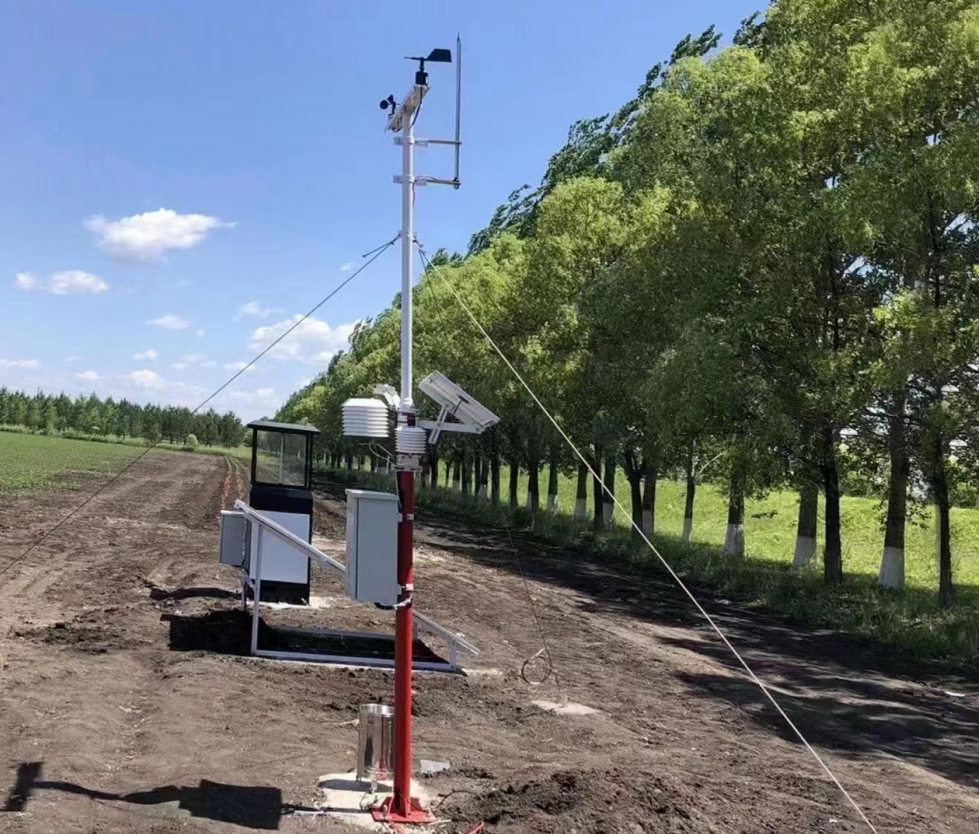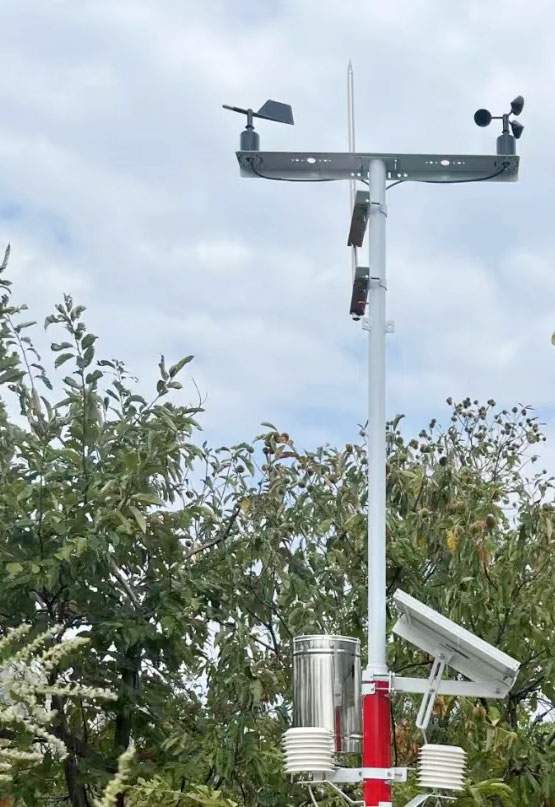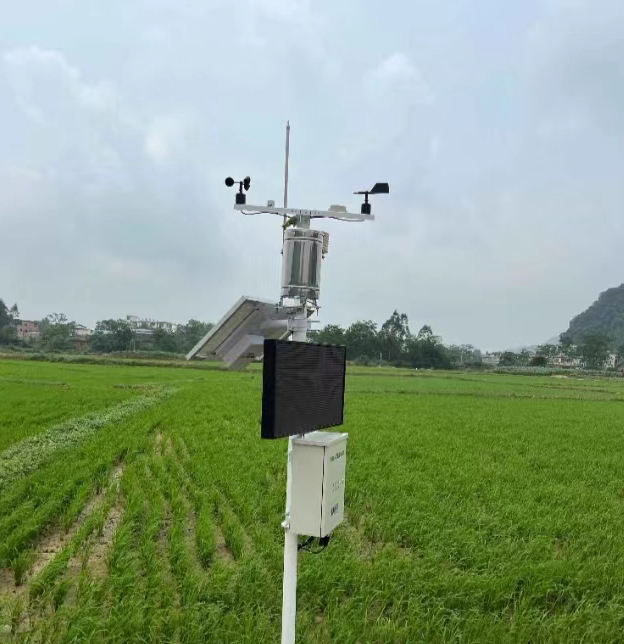

— Blogs —
—Products—
 Consumer hotline +8618073152920
Consumer hotline +8618073152920 WhatsApp:+8615367865107
Address:Room 102, District D, Houhu Industrial Park, Yuelu District, Changsha City, Hunan Province, China
Product knowledge
Time:2025-11-27 11:41:43 Popularity:120
Modern agriculture is undergoing a profound digital revolution, shifting from traditional “experience-based planting” to efficient “data-driven planting.” The foundation of this leap is precise, continuous, and reliable monitoring of the farmland microenvironment.
The NiuBoL farmland microclimate weather station serves as the dedicated “field intelligence center” for agricultural environments. It not only monitors macro climate but focuses on crop canopy (0–2 m) and soil profile (0–1 m) microclimate data, providing the most critical support for precision irrigation, pest/disease early warning, and high-yield modeling. With industrial-grade hardware, ultra-low power design, and globally compatible communication capabilities, the NiuBoL system has become standard equipment for open-field crops, greenhouses, high-value crops, and all types of smart agriculture projects worldwide.
A farmland microclimate weather station is an IoT system that automatically collects real-time meteorological and soil environmental data from localized field areas.
Compared with traditional weather stations, the NiuBoL microclimate station offers the following advantages:
| Feature | Description | Core Value Delivered |
| Monitoring Focus | Targets crop-growing microenvironments (canopy height, multi-depth soil profiles) | Data more accurately reflects actual crop needs → higher decision precision |
| Communication Flexibility | Supports 4G/5G/LoRa/WiFi/RS485 | Adapts to communication conditions worldwide and across project scales |
| Operational Reliability | Industrial-grade design, solar-powered, breakpoint resume upload | Withstands harsh field conditions, long-term unattended operation |
| Integration Capability | Standard Modbus/API/MQTT protocols | Seamlessly connects to existing user or integrator IoT platforms |
The NiuBoL farmland microclimate station uses a modular design for clarity, easy maintenance, and future upgrades.

1. Multi-parameter meteorological sensors: Air temperature/humidity, wind speed/direction, rainfall, light intensity, leaf wetness, etc.
2. Soil sensors: NiuBoL’s flagship products—soil temperature/humidity, EC, pH, and optional NPK sensors with multi-depth profiling.
3. Data logger (smart host): The system “brain”—handles sampling, digitization, local storage (with resume), calibration, anomaly reporting, and communication control.
4. Power & mounting system: Solar panel + wide-temperature lithium battery + galvanized/stainless steel pole for long-term outdoor deployment.
5. Communication module: Built-in 4G/5G/LoRa/WiFi or RS485 for real-time data transmission.
| Category | Typical Parameters | Agricultural Value (Data-Driven) |
| Meteorological | Leaf wetness, air temp/humidity, rainfall | Core inputs for disease forecasting; identifies infection windows |
| Soil | Soil EC, pH, NPK | Precision fertilization & soil improvement; EC guides salinity management |
| Hydrological | Evaporation, rainfall | Accurate crop evapotranspiration → drives water-saving irrigation |
| Environmental | CO₂ (greenhouse), light intensity | Greenhouse climate control; optimizes photosynthesis efficiency |
| Method | Suitable Scenarios | Key Advantages |
| 4G (LTE) | Open-field, remote farms, international projects | Wide coverage, high stability, easy deployment |
| 5G | Smart agriculture parks, high-density sensors, HD video | Ultra-low latency, high bandwidth, future-proof |
| LoRa/LoRaWAN | Large-area farms needing ultra-low power & long range (2–10 km) | Extremely long range, long battery life, low cost |
| WiFi | Indoor greenhouses, areas with existing LAN | Low cost, high speed, fast deployment in clusters |
| RS485 (Modbus) | System integrators, PLC/SCADA projects | Standard industrial protocol, highly reliable |

Investing in a NiuBoL microclimate station is not just buying equipment—it’s acquiring a high-efficiency decision-support system.
- Precision irrigation: 10%–50% water savings based on soil moisture and ET data
- Optimized fertilization: 10%–30% fertilizer reduction using soil NPK/EC data
- Reduced losses: Leaf wetness-based disease alerts cut unnecessary spraying and disease losses by 15%–40%
Data-driven growth models shift farmers from “experience” to “data,” ensuring crops grow under optimal conditions and delivering measurable yield increases.

Background: A large Southeast Asian orchard faced water scarcity and frequent powdery mildew outbreaks.
NiuBoL Solution: Deployed microclimate stations monitoring:
- Meteorological: wind speed/direction, air temp/humidity/pressure, rainfall
- Disease-critical: leaf wetness sensor
- Soil-critical: temperature/humidity, EC salinity, pH
1. Precise early warning via real-time leaf wetness + temperature identified high-risk powdery mildew windows → preventive spraying only when needed.
2. Real-time rainfall + soil EC data eliminated unnecessary irrigation → 40% water savings.
3. First-year yield increase of ~12%, reduced disease incidence, one less operator required → significant OPEX reduction.
1. Deep sensor expertise—especially unmatched performance in RS485/4G/LoRa soil sensors and integrated weather stations.
2. Global project compatibility—supports all major frequency bands worldwide with open protocols (Modbus/API/MQTT) for easy secondary development.
3. Industrial-grade reliability—modular design, no moving parts (optional ultrasonic wind), lightning & EMI protection → 7×24 stable operation.
4. Fast delivery and responsive global technical support.
| Symptom | Common Cause | Solution |
| No data upload for long time | 4G/LoRa signal loss; low solar charge | Check signal; verify panel angle & battery voltage |
| Abnormal rainfall readings | Tipping bucket blocked; cylinder tilted | Clean bucket; re-level sensor |
| Soil EC/pH drift | Probe surface contaminated; poor soil contact; needs recalibration | Clean probe; reinstall tightly in soil |
| Device shows offline on platform | Communication module fault; host frozen | Remote reboot; check module LEDs if issue persists |

A: Yes—fully solar-powered with high-capacity lithium battery, providing at least 7–15 days autonomy during continuous cloudy/rainy weather.
A: Absolutely—open API, Modbus-RTU/TCP, and MQTT support seamless integration.
A: Modules can be customized for any global band (North America, Europe, Asia-Pacific, etc.).
A: Very easy—detailed videos, drawings, and manuals provided; no professional team required.
A: Yes—bulk export in Excel/CSV from the cloud; local storage also available.

A: Electrochemical method provides reliable reference values for relative fertilization optimization; not a full lab substitute.
A: Shaped like a leaf, it measures dielectric changes on its surface to detect dew/condensation duration—key for disease forecasting.
A: Multi-stage surge/lightning protection built in; proper grounding during installation is still required.
A: Up to 10+ km in open terrain; typically 2–5 km in real farmland conditions.
A: Clean sensors (especially rain gauge & pyranometer) quarterly; check battery and fasteners.
A: CE, ISO9001, RoHS, and calibration certificates.
Farmland microclimate weather stations are no longer optional—they are essential tools for achieving high yields, cost reduction, and efficiency gains in agriculture.
With deep sensor expertise, flexible communication solutions, and an open architecture, NiuBoL provides planting enterprises, research institutions, and integrators worldwide with a stable, reliable, and easily integrated digital solution. Choosing NiuBoL means your agricultural project gains stronger digital capabilities, more precise decision support, and a highly competitive edge. Data-driven—together we realize the green, efficient future of agriculture.
Prev:NiuBoL Photovoltaic Weather Station:Cornerstone of Efficient PV Plant O&M
Next:Rainfall Weather Station & Rainfall Sensor: Key Equipment for Precise Precipitation Monitoring
Related recommendations
Sensors & Weather Stations Catalog
Agriculture Sensors and Weather Stations Catalog-NiuBoL.pdf
Weather Stations Catalog-NiuBoL.pdf
Related products
 Combined air temperature and relative humidity sensor
Combined air temperature and relative humidity sensor Soil Moisture Temperature sensor for irrigation
Soil Moisture Temperature sensor for irrigation Soil pH sensor RS485 soil Testing instrument soil ph meter for agriculture
Soil pH sensor RS485 soil Testing instrument soil ph meter for agriculture Wind Speed sensor Output Modbus/RS485/Analog/0-5V/4-20mA
Wind Speed sensor Output Modbus/RS485/Analog/0-5V/4-20mA Tipping bucket rain gauge for weather monitoring auto rainfall sensor RS485/Outdoor/stainless steel
Tipping bucket rain gauge for weather monitoring auto rainfall sensor RS485/Outdoor/stainless steel Pyranometer Solar Radiation Sensor 4-20mA/RS485
Pyranometer Solar Radiation Sensor 4-20mA/RS485
Screenshot, WhatsApp to identify the QR code
WhatsApp number:+8615367865107
(Click on WhatsApp to copy and add friends)
